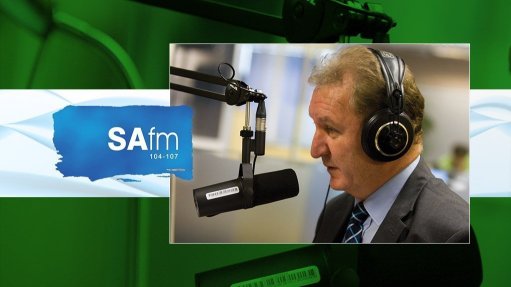New training standards for rope access, fall-arrest industry
The rope access and fall arrest industry will be changing over to National Qualifications Framework (NQF) standards from October this year. This will also include separate standards for fall-arrest technicians.
“The Rope Access and Fall Arrest Association (Rafaa) is excited by these developments and the position it is taking in implementing them. It translates into higher levels of professionalism and enables Rafaa to play a leading role in the emerging international work-at-height industry,” Rafaa secretary Brian Tanner says.
Rafaa, formerly the South African Industrial Rope Access Association (Sairaa), was established in 2005 in a move to accommodate the particulars of the fall-arrest sector and to reflect the growth in the larger industry.
The body began the process of establishing South African Qualifications Authority- (Saqa-) recognised unit standards for rope access and fall arrest and, together with its approved providers, has since trained nearly 3 000 technicians to South African National Standards rope access standards over the last seven years.
One of a number of significant developments in the rope access and work-at-height industry, the migration to NQF-recognised standards follows the need for higher levels of professionalism among association members and a stronger presence by Rafaa in the industry.
Tanner adds that there are now eight unit standards in rope access and fall arrest registered on the NQF, owing to the involvement and support Rafaa has received from the Services Sector Education and Training Authority (Services Seta).
The Services Seta has made a discretionary grant of R1,5-million available to Rafaa for the purpose of recognising the prior learning of individuals already working in the industry. This will provide people with the opportunity to demonstrate competence against the national standards.
“A number of additional processes are being implemented to enable the work-at-height industry to continue to use skills development as a way to enhance professionalism and safety in this growing industry,” he continues.
These processes include the development of learning material and assessment tools for the eight registered unit standards, the application for accreditation with the Services Seta by industry training providers, and the evaluation of Rafaa by the Services Seta as its certification partner in the work-at-height industry.
Rafaa is anticipating the outlined changes to be in place by October 2007. Thereafter, Rafaa will only certify learners who have been deemed competent against the national standards.
Rafaa’s predecessor, Sairaa, was founded in the 1980s by a score of parties active in the rope access industry, which developed out of an initiative by a number of Johannesburg rock climbers who used their climbing experience and equipment to clean windows on high-rise buildings.
Sairaa’s initial mandate was to create a forum for the growing local industry, to assist in the writing of the South African Bureau of Standards-approved standards and to fulfil a certification role for the training of technicians in accordance with these standards.
“During the 1990s, it became apparent that the young industry’s reliance on skills gained in recreational climbing [was] no longer a viable substitute for recognised standards,” Tanner explains.
“The challenge was to adapt our system to accommodate this growth without compromising the existing standards. At the same time, it made sense to align the training and certification system with the country’s developing NQF,” he adds.
Details of the new standards for rope access work are as follows:
Yielding six credits at NQF Level 2, Saqa No 230000 governs how to perform a limited range of rope access tasks and rescues.
This unit standard describes the competence and knowledge required of a person referred to in the rope access industry as a Level 1 rope access technician.
Qualifying learners will be capable of preparing for rope access and assembling personal rope access equipment, explaining and tying basic rope knots, performing (under supervision) basic rope access manoeuvres and tasks safely on a prerigged double-rope system, performing basic rope access rescue manoeuvres (also under super- vision), and maintaining personal rope access equipment.
In addition to the above, learners must be in possession of a medical certificate declaring them free from a condition that may prevent them from working safely, physically fit, at least 18 years of age, as well as communication and mathematically literate at NQF Level 1.
Yielding six credits at NQF Level 3, Saqa 229996 governs how to rig working ropes, undertake rescues and perform a range of rope access tasks
This unit standard describes the competence and knowledge required of a person referred to in the rope access industry as a Level 2 rope access technician.
Qualifying learners will be cap-able of rigging ropes for work and rescue situations, using relevant knots (under supervision), perform- ing rope access manoeuvres and tasks, performing rescues (under supervision), maintaining and inspecting rope access equipment, demonstrating knowledge of worksite organisation, and applying knowledge of the legal and safety requirements to different worksites.
Further, learners must have all the additional requirements as for Level 1 above, and be competent in a registered unit standard for first aid and for performing cardiopulmonary resuscitation.
Yielding six credits at NQF Level 4, Saqa 230001 governs how to supervise rope access teams and perform advanced manoeuvres and rescues.
This unit standard describes the competence and knowledge required of a supervisor, referred to in the rope access industry as a Level 3 rope access technician, who is capable of complete responsibility for work projects, able to demonstrate skills and knowledge of both levels 1 and 2, is conversant with relevant work techniques and legislation, and has comprehensive knowledge of advanced rescue techniques.
Qualifying learners will be capable of performing advanced rope access manoeuvres, performing advanced rescues from any position, organising a worksite in accordance with legal and safety requirements, organising worksites and work projects, and supervising rope access work teams.
In addition to the above, learners must be 21 years of age and have all the additional requirements as for Level 2 above.
Yielding six credits at NQF Level 4, Saqa 229997 governs how to select equipment and rig ropes for rope access projects.
This unit standard describes the competence and knowledge that a Level 3 supervisor should have in addition to the above standard.
Qualifying learners will be capable of selecting equipment for a rope access project, explaining requirements for equipment inspections and storage, determining safe loads for rope access projects, and placing anchors and rig ropes for work and rescue situations.
Comments
Announcements
What's On
Subscribe to improve your user experience...
Option 1 (equivalent of R125 a month):
Receive a weekly copy of Creamer Media's Engineering News & Mining Weekly magazine
(print copy for those in South Africa and e-magazine for those outside of South Africa)
Receive daily email newsletters
Access to full search results
Access archive of magazine back copies
Access to Projects in Progress
Access to ONE Research Report of your choice in PDF format
Option 2 (equivalent of R375 a month):
All benefits from Option 1
PLUS
Access to Creamer Media's Research Channel Africa for ALL Research Reports, in PDF format, on various industrial and mining sectors
including Electricity; Water; Energy Transition; Hydrogen; Roads, Rail and Ports; Coal; Gold; Platinum; Battery Metals; etc.
Already a subscriber?
Forgotten your password?
Receive weekly copy of Creamer Media's Engineering News & Mining Weekly magazine (print copy for those in South Africa and e-magazine for those outside of South Africa)
➕
Recieve daily email newsletters
➕
Access to full search results
➕
Access archive of magazine back copies
➕
Access to Projects in Progress
➕
Access to ONE Research Report of your choice in PDF format
RESEARCH CHANNEL AFRICA
R4500 (equivalent of R375 a month)
SUBSCRIBEAll benefits from Option 1
➕
Access to Creamer Media's Research Channel Africa for ALL Research Reports on various industrial and mining sectors, in PDF format, including on:
Electricity
➕
Water
➕
Energy Transition
➕
Hydrogen
➕
Roads, Rail and Ports
➕
Coal
➕
Gold
➕
Platinum
➕
Battery Metals
➕
etc.
Receive all benefits from Option 1 or Option 2 delivered to numerous people at your company
➕
Multiple User names and Passwords for simultaneous log-ins
➕
Intranet integration access to all in your organisation


















